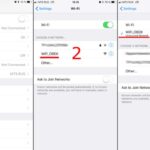Arizona’s vehicle emission testing process utilizes an OBDII code reader to check for faults within the vehicle’s emissions system. This method has been in place since 1996 for all vehicles equipped with an OBDII port. Instead of traditional tailpipe emissions tests, technicians simply connect an OBDII code reader to the vehicle’s diagnostic port to assess system readiness and identify any potential issues.
How OBDII Code Readers are Used in Arizona Emissions Tests
The process is relatively straightforward. A technician connects an OBDII code reader to your vehicle’s OBDII port. The reader then communicates with the vehicle’s onboard computer to check for diagnostic trouble codes (DTCs) and monitor the status of key emissions components.
Here are the key parameters an OBDII code reader checks during an Arizona emissions test:
- Catalyst: Checks the efficiency of the catalytic converter.
- Evap System: Evaluates the evaporative emissions control system for leaks.
- Heated Cat: Monitors the performance of the heated catalytic converter.
- O2 Sensor: Measures the oxygen levels in the exhaust stream.
- EGR: Assesses the Exhaust Gas Recirculation system’s functionality.
- Heated O2: Checks the operation of the heated oxygen sensor.
Understanding “Ready State” for Arizona Emissions
A crucial aspect of passing the emissions test is ensuring your vehicle’s system is in a “Ready State.” This means the vehicle’s onboard diagnostic system has completed its self-tests and monitoring cycles for all relevant emissions components.
-
Checking Readiness: Turn your ignition key to the “ON” position without starting the engine. Observe the Check Engine Light (MIL). A flashing MIL indicates an “Unready” state, while a solid MIL suggests a “Ready” state.
-
Achieving Readiness: If your vehicle is not ready, you’ll need to complete a specific “Drive Cycle” to allow the system to complete its self-tests. The testing station will provide instructions if your vehicle is not ready. Attempting to test multiple times in an unready state can lead to further complications and require a visit to a designated Waiver Station.
Passing Emissions with One “Not Ready” Parameter
While all systems ideally should be in a “Ready State,” Arizona allows for one “Not Ready” or one failed parameter as long as the MIL is not illuminated. However, no more than one parameter can fail in order to pass the overall test. A common cause of failure is a faulty gas cap that doesn’t hold pressure.
Importance of a Functioning Gas Cap
Although not always rigorously checked, a properly functioning gas cap is essential for passing the evaporative emissions test. A loose or damaged gas cap can trigger an Evap System failure. Replacing a faulty gas cap can often resolve this issue. If you fail due to a gas cap issue, previously passed tests will be stored, allowing for a retest focused solely on the gas cap.
Seeking Professional Assistance
If you’re concerned about your vehicle’s ability to pass emissions, consider seeking professional help. A qualified mechanic can diagnose any underlying issues, perform necessary repairs, and ensure your vehicle is in optimal condition for the test. Having your vehicle serviced by a reputable shop near a testing station can be particularly convenient.

